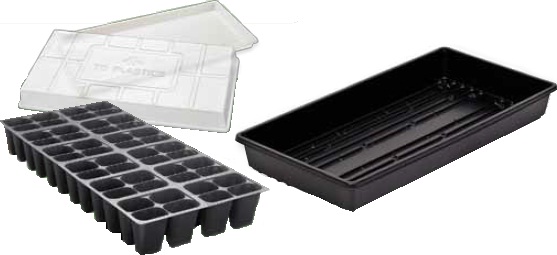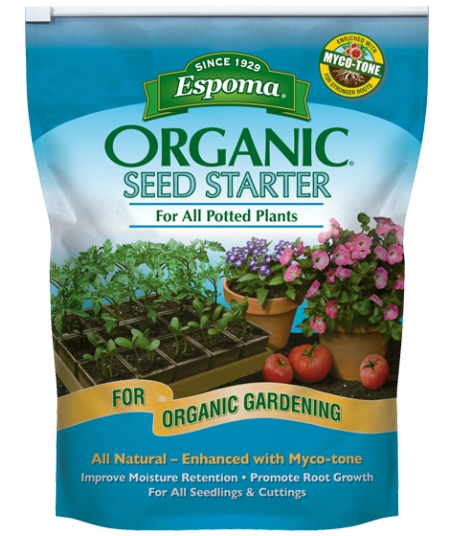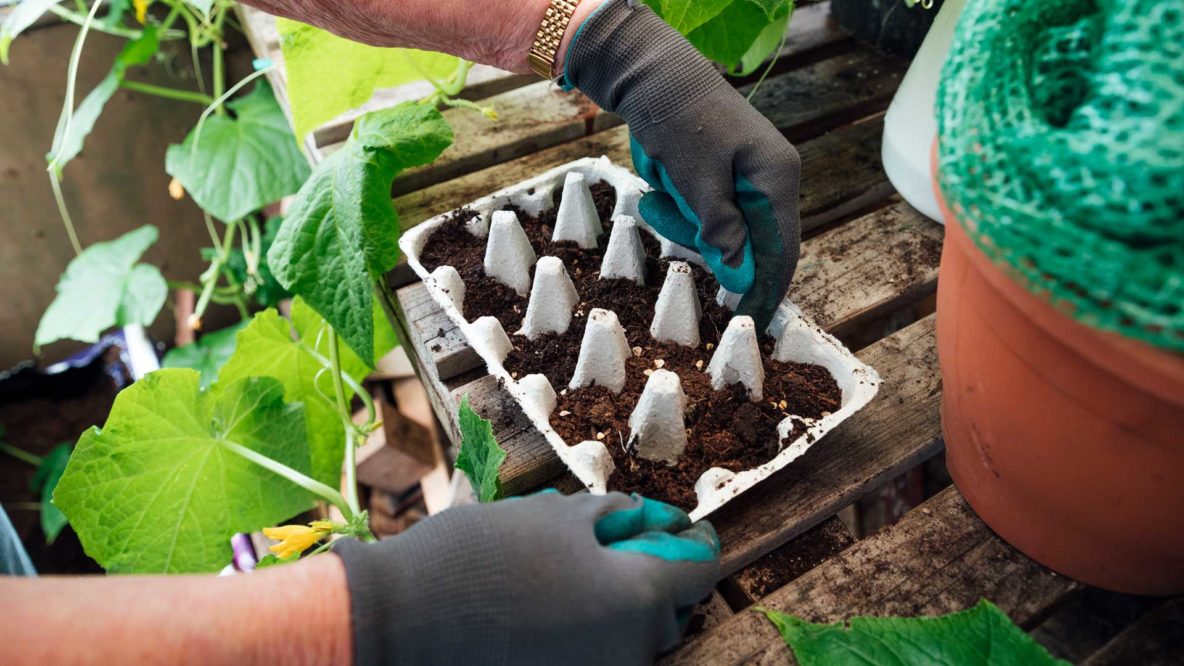DO Start with clean trays You can re-use last year’s trays, inserts and domes (or even re-purpose other household items like egg cartons) but we recommend cleaning and sterilizing them with a weak water and bleach solution (9:1) to kill any lingering bacteria or fungus.

DON’T Use Regular Potting Mix That big bag of potting soil you have in your garage is probably not the best choice for your new little seedlings. Most regular garden and potting soils are pretty heavy and can sometimes cause damping off – a fungal ailment that causes weak and distended plants. Instead, use a soil-less seed starting mixture to give your seeds good drainage and a sterile atmosphere to grow.

There are many great seed starting mixes out there. You can even make your own from some recipes online. As for us, we like to recommend Espoma Organic Seed Starter. It’s a rich blend of peat moss, humus, perlite and dolomite limestone. It also has 11 different kinds of mycorrhiaze, naturally occurring fungi that help enhance plant growth and reduce the amount of watering needed
DON’T forget to label your seed containers We’ve all done it. Spent hours meticulously caring for a beautiful, healthy crop of…er, what was this again? Basil? Baby’s Breath? Remember to label your seed containers before you start!
DO Check the Calendar You want to start your seeds right at that Goldilocks moment – not too early but not too late. The back of your seed packet will tell you exactly how long it will take the seeds to germinate, but a good rule of thumb is that most seeds should be started about 6 weeks before the last average frost date. For most of the Denver metro area, Mother’s Day is a pretty reliable last average frost date.
DON’T Overwater Your seedlings need plenty of water, but too much can drown them. Keep the soil moist but not soaking. Cover the container to hold in humidity while the seeds germinate.
DO give your seeds plenty of light and heat You can think of seed sprouting in two stages, germinating and growing. Before seeds germinate, they won’t need any light, but they will need a warm environment. Use a heat pad to radiate heat from below and create a perfectly cozy bed for your seeds. Once the seeds have sprouted, they’ll need lots of healthy light. Usually, new seedlings need 14 to 16 hours of direct light followed by 8 hours of darkness. Put your seeds in the sunniest part of your house, a south or west facing window usually does the trick. If you don’t have a good sunny spot, a grow light is the perfect way to make sure your seeds catch all the rays they need.

